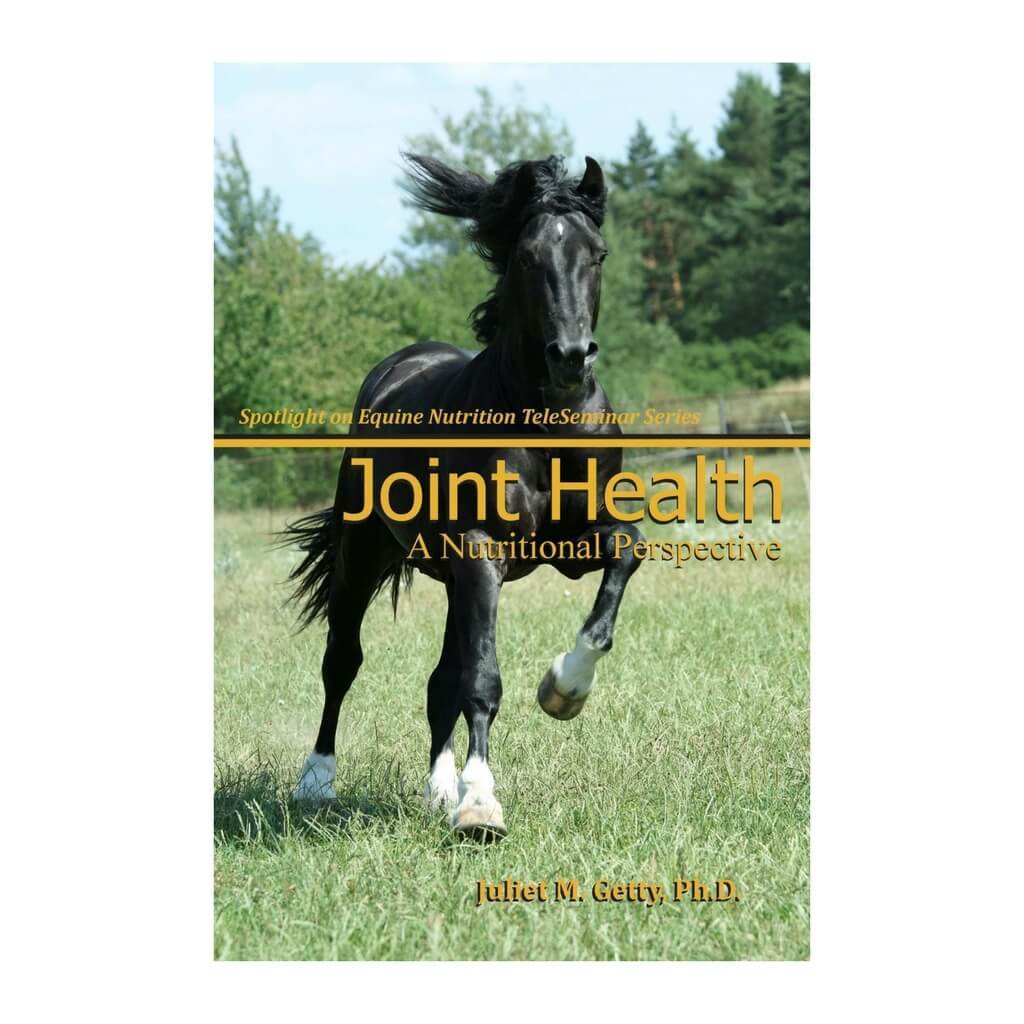-
Joints, like all tissues in the body, rely on nutrients for maintenance and repair. The horse's body prioritizes its use of nutrients, first supporting vital organs - heart, lungs, liver, kidneys, and brain -- then giving what nutrients are left over to the rest of the anatomy.
It is vitally important that the horse's diet include sufficient nutrients to make it all the way to the organs at the end of the body's hierarchy, the joints. Supplementing for joint health without first establishing a nutritional foundation is a waste of effort and money.
Highlights:
- Differentiating between joint supplements
- Role of vitamin C, omega 3s and quality protein
- Whole foods and herbal treatments
- Curcumin and its benefits
- Anatomy of joint and joint injections
About Dr. Juliet M. Getty
Juliet M. Getty, Ph.D. is an independent equine nutritionist with a wide U.S. and international following. Her research-based approach optimizes equine health by aligning physiology and instincts with correct feeding and nutrition practices. Dr. Getty’s goal is to empower the horseperson with the knowledge to provide the best nutrition for his or her horse’s needs.
Dr. Getty is the author of the comprehensive resource, Feed Your Horse Like a Horse, as well as seven topic-centered Spotlight on Equine Nutrition series of booklets:
- Whole Foods & Alternative Feeds
- Joint Health - A Nutritional Perspective
- Aging Horse - Help Your Horse Grow Old with Dignity and in Health
- Laminitis - A Scientific and Realistic Approach
- Easy Keeper - Making it Easy to Keep Him Healthy
- Equine Cushing's Disease - Nutritional Management
- Equine Digestion - It's Decidedly Different
Save on Book Packages!
- Save $2 when you buy any 2 Spotlight Titles (mix & match)
- Save $12 when you buy all 7 Spotlight Titles
- Save $28 when you buy all 7 Spotlight Titles + Feed Your Horse Like A Horse
She also offers an informative e-newsletter, Forage for Thought. Opt-In here. Her Resource Library offers a world of useful information for the horseperson, including a library of her past articles, tips and recordings. Her Free-Shipping Store helps horse owners choose the right supplement for their horse’s specific needs.
-
Excerpt from Joint Health – A Nutritional Perspective
Quality protein
It’s vital that there is quality protein in the diet, because collagen is a protein. By “quality protein,” we don’t mean green and leafy hay vs moldy and dusty (although that matters, too). We mean the degree to which the protein in the forage or other food can be utilized by the body. In order to be used by the body, proteins need the right “building blocks” (amino acids). Some amino acids are not produced by the body; these are called the essential amino acids—you can look at these as essential to be supplemented. So if your horse is on hay only, for example, and it’s just one type of grass hay, generally speaking it won’t be offering all of the amino acids that he needs, therefore it doesn’t offer “quality protein.” (And by the way, the crude protein measured by hay analysis does not tell you the quality—the usability—of the protein.)
The solution is to mix foods. We need to make sure that the horse is getting several types of grass hay. Even better might be to add a legume such as alfalfa (or clover in the pasture). Legumes have a different amino acid makeup than grass, and so when fed together the two forages complement each other, giving the horse the amino acids that he needs to make collagen. Another legume is soybean meal, which is often added to commercially fortified feeds.
But mixing forages can have an equally powerful benefit, even without legumes. If your horse has access to a pasture that has a lot of trees and bushes and shrubs and maybe some berries or different varieties of foods, these also contribute to protein balance. Wild horses don’t suffer from a lot of joint problems because their diets are filled with variety; they eat all kinds of things, seeds and nuts and flowers and tree bark and leaves and so on, whereas domesticated horses tend to consume a steadier, more limited diet. You can simulate this variety to a degree by adding more ingredients—whole foods such as ground flaxseeds, chia seeds, split peas, pumpkin seeds, and ground or hulled hemp seeds.
Vitamin C
The second collagen builder is vitamin C. Vitamin C is absolutely necessary to make collagen—there is no way around that. Fortunately, your horse produces his own vitamin C, but as he gets older he doesn’t produce as much of it. By the time he’s in his twenties he is probably producing very little at all, so once your horse starts to get into his late teens I recommend adding vitamin C to his diet to help with collagen production.
Vitamin C has other roles, too. It’s an anti-inflammatory, it’s an antioxidant, and it’s also a natural antihistamine, which can be helpful for respiratory problems and even skin allergies.


